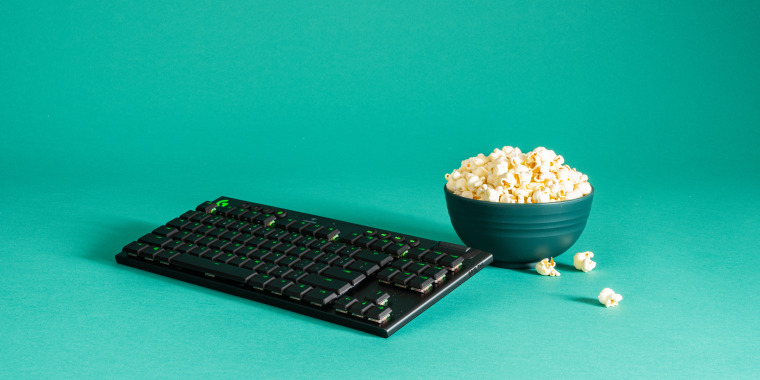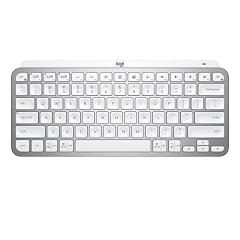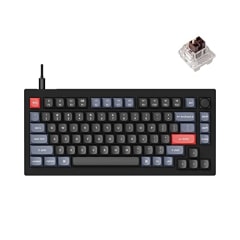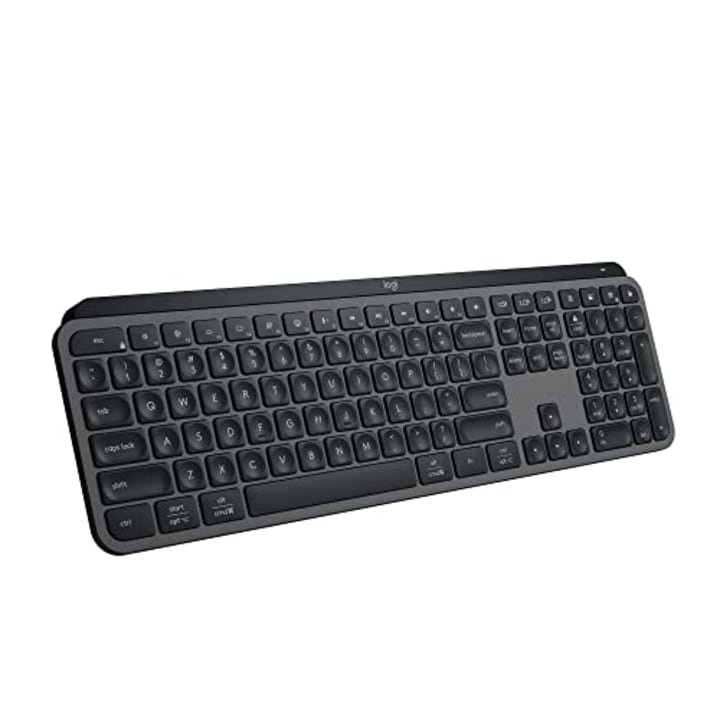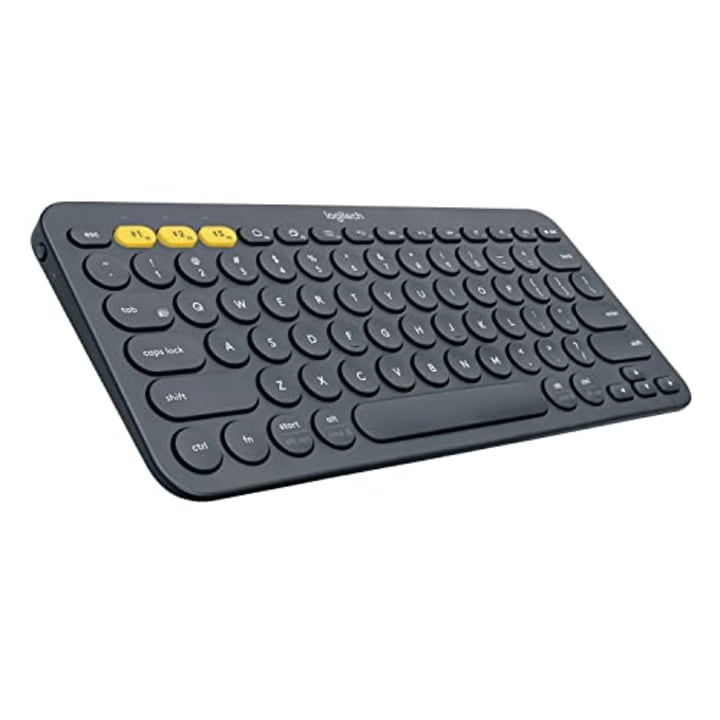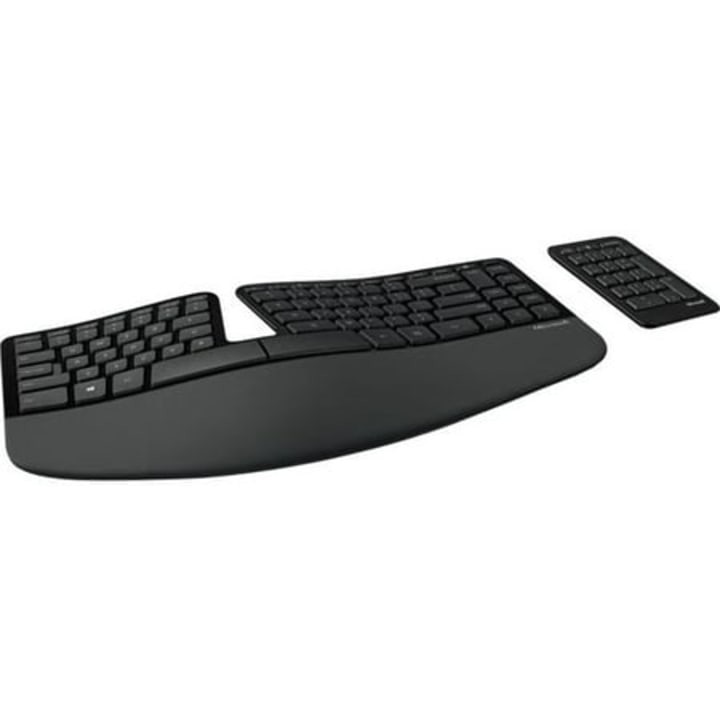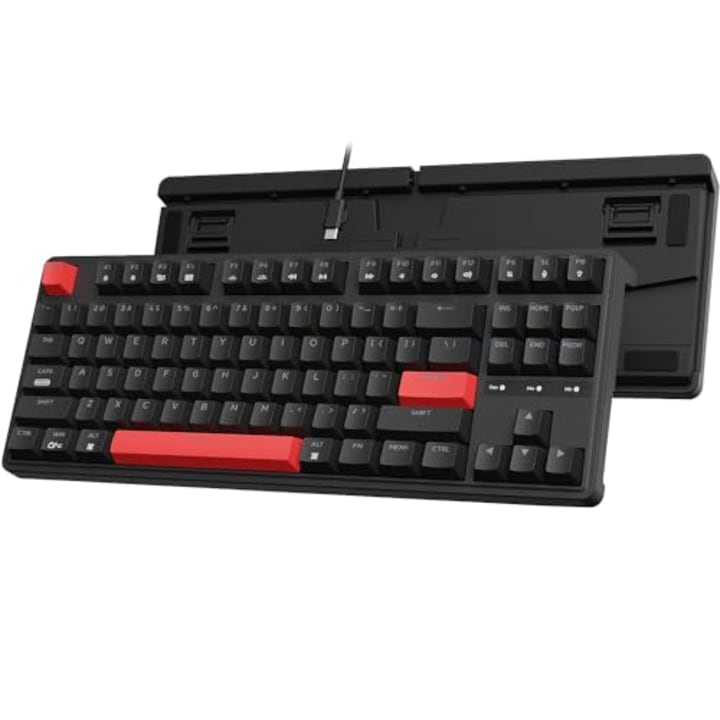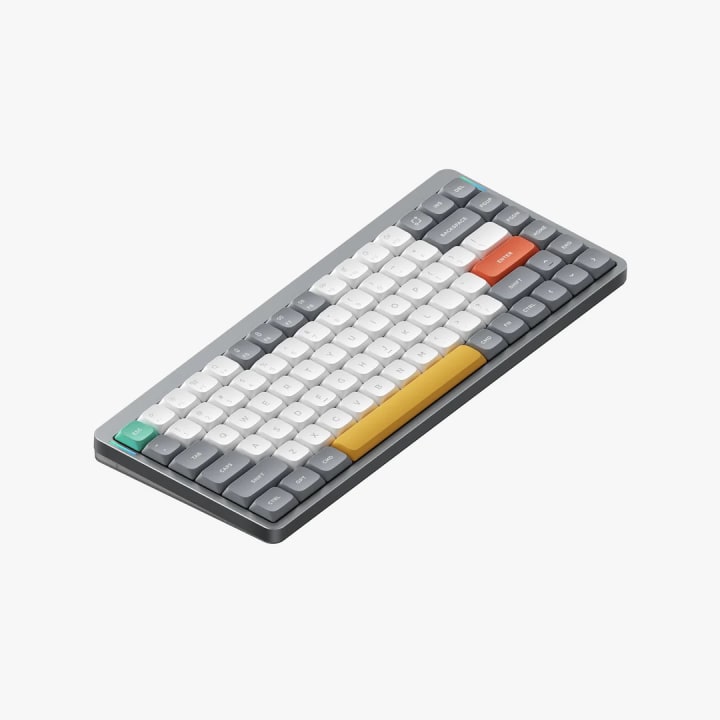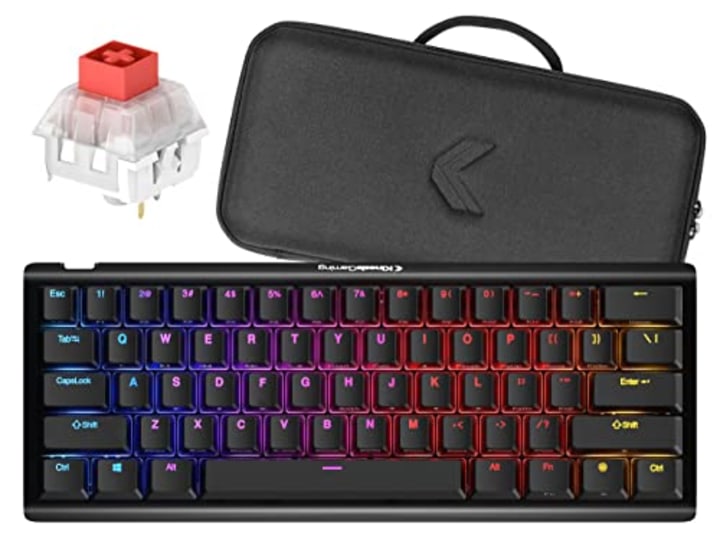The right computer keyboard paired with a comfortable, ergonomic mouse, can help improve typing comfort and accuracy, in my experience.
There are over a thousand different keyboards on the market, including wireless, mechanical and ergonomic keyboards. To find the right one for you, we tried a dozen different models and spoke with tech experts about what to look for when shopping for the best keyboards.
SKIP AHEAD Best wireless keyboards | Best mechanical keyboards | Best gaming keyboards | How to shop for keyboards
How we picked the best keyboards
Along with trying a dozen keyboards, we spoke with industry experts for technical and shopping guidance to help inform our recommendations. Here is what we kept in mind:
- Size: Size is one of the most important factors to consider, according to Eric Belger, group product manager at HyperX, a gaming accessories manufacturer that has shipped over one million keyboards. The most common sizes are: Full size (includes alphabet, number row, function row, modifier keys, arrow keys and number pad), tenkeyless (full size, minus the number pad cluster typically on the right side), laptop or 75% (missing number pad cluster and some modifier keys like End, Ins and PrtSc), and compact (anything smaller than laptop size). Most of our picks are available in multiple sizes.
- Connectivity: We picked keyboards that can connect wirelessly or with a USB cable. Our team favored wireless Bluetooth options since they connect easily and do not add clutter to your desk, unlike wired keyboards.
- Backlighting: White backlighting can sometimes help make keys more legible in dark environments. Multicolor backlighting, while pricier, can add a fun and personal touch to any keyboard.
- Membrane versus mechanical: Most keyboards use either membrane or mechanical equipment inside. Membrane keyboards are typically thin and quiet wireless keyboards that have slim rubber key switches underneath the keys. Mechanical keyboards are usually taller and louder than membrane ones and have metal and plastic switches underneath the keys. (More on this below.)
- Comfort: Keys that are relatively quiet, evenly spaced from each other and smooth to press all help make a keyboard comfortable to type on. All of our picks were comfortable for our hands, wrists and fingers after long days spent typing.
How we tried keyboards
I have tried various keyboards including wireless, mechanical and laptop-sized options for the past ten years. Combining my experience with expert advice, I identified twelve notable keyboards to try and connected with the respective brands to get samples in our office.
I tried each keyboard for at least one week. To get a varied perspective, I also lent keyboards to members of the NBC Select team to try for one week. If they liked the keyboard, they continued to use it for a month before sharing their impressions with me.
While trying each keyboard, our team paid particular attention to the following factors:
- Comfort: As writers and editors, our days are filled with typing-intensive work. We paid close attention to how our fingers, hands and wrists felt after a full day using each keyboard. We also noted how many errors we made while typing.
- Ease of use: We noted how quickly and easily each keyboard connected to our computer.
- Battery life: We paid attention to how often we needed to charge the wireless keyboards.
- Software: All the keyboards on our list work as expected once connected to your computer without any additional software. Some keyboard brands have software you can download online that lets you customize the keyboard for additional perks; you can change what certain keys do or add new shortcuts, for example. Others don’t make software of their own, but recommend downloading outside programs, like VIA, to enable similar customization.
The best keyboards of 2024, according to our editors
Our top picks come from a mix of large brands like Logitech and smaller brands like Keychron. Below each recommendation, we share specs we think you should know about, like connectivity features, battery life and size options.
Best wireless keyboards
Wireless keyboards typically connect to your device via Bluetooth or a wireless dongle that plugs into your computer. These keyboards either use a rechargeable battery or replaceable AA or AAA batteries. In my experience, you can typically use products with rechargeable batteries while charging.
Best full size wireless: Logitech Mx Keys S
Commerce analytics manager Amanda Smith uses this full-size Logitech keyboard because having a number pad cluster makes her work much faster and easier. “The keys are soft and not too loud to click, and [are] very comfortable to type on,” says Smith.
One new addition to the Keys S is the emoji key. When pressed, a small menu appears on your screen with over a dozen emoji to insert into emails and documents. Smith uses the emoji key to easily add a heart or smiley emoji to emails instead of having to search through the settings menu.
This keyboard is compatible with Logitech’s Logi Options+ software. This software takes about a minute to set up and lets you customize your keyboard’s backlighting and function keys. It also lets you change what the function keys do when you are using a specific application. In Google Chrome, for example, I set function keys to open a new tab, close a window and minimize a window.
Connectivity: Bluetooth, Wireless (via USB dongle), Wired (detachable USB-C) | Battery life: Up to 10 days (backlight on), up to 5 months (backlight off) | Sizes available: Full size | Backlighting: Yes, white | Compatible with: PC, Mac
Best compact wireless: Logitech Mx Keys Mini
Select updates editor Mili Godio usually finds keyboards bulky and difficult to use, but loved this laptop-size keyboard. “It’s the most comfortable keyboard I’ve used,” says Godio. “The keys contour to the tips of my fingers and it doesn’t take up much space on my desk.”
It is five inches shorter than the full-size Logitech Mx Keys S. Otherwise, it is more similar than different —the keys are about the same height, it has the same battery life and it uses the same Logi Options+ software.
Connectivity: Bluetooth, Wired (detachable USB-C) | Battery life: Up to 10 days (backlight on), up to 5 months (backlight off) | Sizes available: Full size, laptop (75%) | Backlighting: Yes, white | Compatible with: PC, Mac
Best budget wireless: Logitech K380
I use this small keyboard when working on a mobile device like my smartphone or tablet — though it’s also compatible with full-sized laptops or computers. At 15 ounces, it is the smallest and lightest keyboard on our list so it’s great for travelers (the Mx Keys Mini listed above, weighs about 18 ounces in comparison). Its small size, two-year battery life and wireless connectivity make it an excellent option for travelers.
That said, due to its small size and rounded keys, I make more typos using the K380 compared to other keyboards. Even after long hours of use, I find it slightly harsher on my fingers and hands when compared to larger, more expensive options.
The Logitech K380 can also use the brand’s Logi Options+ software, but has less customization options compared to Logitech’s Mx Key series of products — you can only customize the F4, F5, F6, and F7 key functions.
Connectivity: Bluetooth | Battery life: Up to 2 years (2 AAA batteries) | Sizes available: Laptop (75%) | Backlighting: No | Compatible with: PC, Mac, iPad, iPhone, ChromeOS, Android
Best ergonomic: Microsoft Sculpt Ergonomic Keyboard (For Business) (out of stock)
People with wrist and hand pains can potentially alleviate specific typing-induced stresses by using an ergonomic keyboard like this one. Select contributor Rebecca Isaacs’ bought the Microsoft Sculpt in 2021 to alleviate her hypermobility wrist pains and it’s since become her go-to keyboard when she needs to type for hours, she says.
The center of this keyboard is slightly raised, creating a swooping slope that helps place your wrists and forearms in a more neutral position, according to the brand. Typing on the keys also feels smooth and isn’t too noisy, according to Isaacs.
One of the best parts of this keyboard is the separate number pad, which you can place anywhere on your desk to add flexibility to your typing experience, according to Karen E. Loesing, an ergonomic consultant and owner of The Ergonomic Experts.
Connectivity: Wireless via USB dongle | Battery life: Up to 3 years (2 AAA batteries) | Sizes available: Tenkeyless | Backlighting: No | Compatible with: Windows
Best mechanical keyboards
Mechanical keyboards have metal and plastic switches underneath the keys that typically lead to a louder, more tactile typing experience. (More on mechanical keyboards below.)
Best mechanical: Keychron V Series
The Keychron V series strikes a great balance between quality, customization and price, in my experience. I use the compact size of this keyboard with tactile key switches (which have a slight bump as you press the key) and the optional volume knob in the top right corner.
Of all the keyboards I’ve tried, I typed the fastest and most accurately using this one. The keys are evenly spaced and the key switches gently push my fingers off of the keys after I press them, so I move onto the next key faster.
At about 13 inches long and 4.8 inches wide, it sits compactly on my desk and easily fits on my sliding under-desk keyboard tray. I usually listen to music while I work, and the volume knob makes controlling music much easier than on a keyboard without one. It feels light and comfortable to type on — even the larger keys like the space bar, return key and enter key feel smooth and consistent to press.
Like most of Keychron’s keyboards, this is compatible with popular third-party websites and software that lets you customize the backlighting, individual key functions and more. I use VIA, a free website recommended by Keychron, to customize keys like “delete” and “home” to skip and repeat media I am streaming. Along with key adjustments, you can use VIA to customize backlighting and add special functions, like Siri, to your layout.
The Keychron V series is available in compact (called the V2), laptop (called the V1), tenkeyless (called the V3), full size (called the V6) and other sizes. You can add a corner volume knob to all of these options for $10 more.
Connectivity: Wired (Detachable, USB-C adapter included) | Battery life: N/A | Sizes available: Compact, tenkeyless, laptop (75%), full size | Backlighting: Yes, multicolor | Key switch options: Linear, tactile, clicky | Hot-swappable: Yes | Compatible with: Windows, Mac
Best budget mechanical: Keychron C3 Pro
The Keychron C3 Pro is a good option if you are looking for a lower-priced mechanical keyboard that still feels great to type on. It took a few days to get used to the light bounce and noise of the tactile key switches. But after that break-in period I typed at a similar speed to my usual keyboard.
Like most of Keychron’s keyboards, it is compatible with popular free websites and software, like VIA, that let you customize the backlighting, individual key functions and more.
The Keychron C3 Pro is only available in one size, with two key switch options. Unlike our other mechanical keyboard picks, it is not hot-swappable (see FAQ for more info).
Connectivity: Wired (Detachable, USB-C adapter included) | Battery life: N/A | Sizes available: Tenkeyless | Backlighting: Yes, red | Key switch options: Linear, tactile | Hot-swappable: No | Compatible with: Windows, Mac
Best wireless mechanical: Nuphy Air Series V2
Select editorial project manager Rebecca Rodriguez finds typing on the Nuphy Air 75 series V2, smoother and faster than her previous wireless membrane keyboard. The Nuphy Air has a much shorter key profile than our other mechanical picks — it’s more akin to a laptop or membrane keyboard in height. Despite its shorter size, it still has a distinct mechanical clicky sound Rodriguez loves.
Rodriguez uses Bluetooth and has never had an issue with the connection, but you can also use a wireless USB dongle or a wired cable. It has nine multicolor backlighting modes that she changes based on her mood or focus.
The Nuphy Air is available in laptop size (called the Air 75 V2), a compact size (called the Air 60 V2) and a full size (called the Air 96 V2). The V2 version has improved speed, battery life and is compatible with software like VIA that lets you customize the backlighting, individual key functions and more.
Connectivity: Wired (Detachable USB-C adapter included), Wireless (USB receiver), Bluetooth | Battery life: Up to 48 hours | Sizes available: Compact, laptop (75%), full size | Backlighting: Yes, multicolor | Key switch options: Linear, tactile, clicky | Hot-swappable: Yes | Compatible with: Windows, Mac
Best gaming keyboards
Gaming keyboards are typically wired and mechanical. Since wired keyboards respond to inputs almost instantly, professional gamers typically prefer a wired connection, as a millisecond delay can be the difference between winning and losing, says Belger.
Best ergonomic gaming: Kinesis Gaming TKO
A Select Giftable Tech Award winner, this is one of the most compact keyboards on our list because it omits the number pad, function row, modifier keys and arrows keys. Its small footprint frees up a lot of space on my desk for moving my mouse, which I do more aggressively when gaming.
My favorite part of this keyboard is its adjustable feet. Underneath each of its four corners is a foot that snaps out at two different heights, letting you prop or tilt the keyboard at different angles. I tried a range of angles for gaming, though I ended up preferring the standard, flat setup in the end — it was the most comfortable and familiar for me.
It comes with a carrying case and multiple space bar options — out of the box, it has three smaller space bars in place of the standard long one. You can reprogram the different space bar buttons to perform other actions like function keys — I ended up swapping them out for the long, traditional bar.
Connectivity: Wired (Detachable) | Battery life: N/A | Sizes available: Compact | Backlighting: Yes, multicolor | Key switch options: Linear, tactile, clicky | Hot-swappable: Yes | Compatible with: Windows, Mac
How to shop for keyboards
You can use any keyboard to get basic computing tasks done but certain keyboards may be a better fit for your needs than others.
Below are a few things our experts’ recommend keeping in mind as you shop:
Find your preferred keyboard and keycap size
The ideal keyboard and keycap size is based on personal preference, according to both Belger and Mike Sickler, the founder of NovelKeys, a boutique keyboard manufacturer and vendor based in West Virginia. Someone typing for a few hours a day may prefer something different from someone using their keyboard for hours of spreadsheet work. Even within the NBC Select team we have different size preferences: Smith needs a full-size keyboard with a number pad for her data-heavy workflow, while I need a compact one that fits on my small keyboard tray.
To find your ideal size, consider the size of your workspace and also think about how often you use the number pad and function row — compact keyboards omit these keys. I recommend going to an electronics store in person, they often have models on the show floor available to try out.
Consider different key switches
If you are shopping for a mechanical keyboard, you will have to decide what type of key switch you want. Linear switches are typically preferred for gaming, as the smooth pressing action offers no resistance during tense moments where you may be clicking keys quickly, says Belger. Tactile and clicky switches may be a good fit for typists, because they provide physical and audible feedback.
Most of the NBC Select team prefers tactile switches, but both Belger and Sickler say the best key switch comes down to personal preference.
Wired or wireless
In my experience, wired keyboards are cheaper than comparable wireless ones. Most of the NBC Select team prefers wireless keyboards in the office — wired keyboards can look cluttered and take up more desk space with their cables. Wireless keyboards, on the other hand, are typically sleeker, but run on battery power and need to recharge at some point (unless they use AA or AAA batteries, which must be fully replaced).
Wireless keyboards introduce a small amount of delay in typing compared to wired ones, but for most people (outside of professional gamers), this delay is imperceivable, says Sickler.
Meet our experts
At Select, we work with experts who have specialized knowledge and authority based on relevant training and/or experience. We also take steps to ensure all expert advice and recommendations are made independently and without undisclosed financial conflicts of interest.
- Eric Belger is a group product manager at HyperX, a gaming accessories manufacturer that has shipped over one million keyboards.
- Karen E. Loesing is the owner of The Ergonomic Expert, a consulting company for ergonomic office evaluations.
- Mike Sickler is the founder of NovelKeys, a boutique keyboard manufacturer and vendor based in West Virginia.
Why trust Select?
Harry Rabinowitz is a reporter at NBC Select who has covered consumer technology for years. For this piece, he tried a dozen keyboards from top brands for his daily workflow. He then lent 10 of these keyboards to other NBC Select staffers who tried them out for a one-month period. Rabinowitz also spoke with keyboard industry experts and conducted thorough research on top-rated keyboards.
Catch up on Select’s in-depth coverage of personal finance, tech and tools, wellness and more, and follow us on Facebook, Instagram, Twitter and TikTok to stay up to date.
